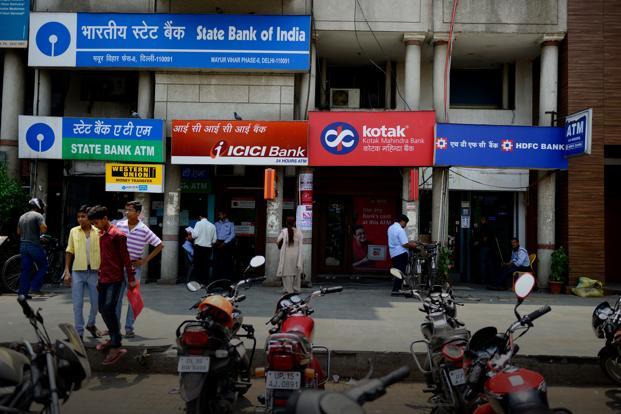In this article, Siddharth Kumar analyses the new regime of the Reserve Bank of India aimed at conquering the overwhelming stress of Non Performing Assets on the Indian Economy while charting the trajectory of its implementation.
The Reserve Bank of India (“RBI) has in the past, undertaken various ambitious endeavours to combat the overwhelming peril of Non-Performing Assets including the Joint Lenders Forum, Corporate Debt Restructuring, Strategic Debt Restructuring, Scheme for Sustainable Structuring of Stressed Assets, etc. But, in the wake of the enactment of the Insolvency and Bankruptcy Code, 2016 (“Code”) which comprehends of an efficacious and holistic insolvency regime, the RBI has furthered its fight for the effective resolution of stressed assets by employing the Code along with a reformed regime imbued with a targeted and harmonised approach.
In view of the substantial overhaul of RBI’s NPA regime and its far-reaching implications, it is pertinent to chart its trajectory.
RBI and IBC – The first step
Sections 35AB of the Banking Regulation Act, 1949 introduced in 2017 amendment has empowered RBI to direct banks and financial institutions to initiate insolvency resolution proceedings under the Code for the resolution of their stressed assets and to form internal committees in order to effectuate this power.
In 2017, RBI had (vide press release dated 13th June, 2017) directed banks to initiate insolvency proceedings against 12 of the largest defaulters whose exposure amounted to 25% of the aggregate NPAs in the economy. The criterion for such determination was to identify those accounts with fund and non-fund based outstanding amount greater than Rs. 5,000 crores of which 60% or more have been classified as non-performing by banks. These accounts stand at different stages of resolution but there is solace in the fact that sound resolution processes have been set in motion for them. The biggest success story among these 12 has been Tata Steel’s buy-out of Bhushan Steel for a consideration of Rs. 35,200 crores against a total debt of more than Rs. 44,000 crores. Recently, the resolution plan of Monnet Ispat and Energy Ltd. (one of the abovementioned 12 identified companies) has been completed.
The Constitutionality of the aforementioned press release along with RBI’s statutory power under Section 35 AB had been challenged by Essar Steel Limited before the High Court of Gujrat, which ultimately affirmed the exercise of RBI’s statutory power to be just and upheld the its validity. The same just power is exercised under the new regime brought forth by the Notification dated 12th February 2018 (“Notification”).
The current position of the resolution of the above mentioned 12 companies is as follows:
- Bhushan Steel Ltd: Bhushan Steel, the largest manufacturer of auto-grade steel in India had an astounding loan default of Rs. 44,478 crores. Tata Steel has acquired a stake of 72.65% in Bhushan Steel in pursuance of its resolution plan for a consideration of Rs. 35,200 crores, the single largest yield in any resolution under the Code, till date.
- Lanco Infratech Ltd: A company that was one of the highest growing infrastructure companies in the entire world, had a loan default of Rs. 44,364 crores. The Committee of Creditors have moved for the liquidation of the Company before the Hyderabad bench of the NCLT.
- Essar Steel Ltd: Essar Steel, one of the largest steel manufacturers in India and abroad, had a loan default of Rs. 37,284 crores. Currently, it is undergoing Corporate Insolvency Resolution Process (“CIRP”). It was the only company that had challenged its position among the 12, all to no avail.
- Bhushan Power & Steel Ltd: A sister concern of Bhushan Steel Ltd., it had accumulated a debt of Rs. 45,000 crores. The Company has gone into CIRP and another steel manufacturer, JSW Steel, has submitted a ₹ 19,700 crore resolution plan to the former’s Committee of Creditors.
- Alok industries: The Mumbai based textile manufacturer had defaulted on loans of Rs. 22,075 crores. The Mumbai Bench of the NCLT has admitted the application for insolvency against it. Further, Reliance and JM Financial have placed a joint bid of Rs. 5050 crores for it.
- Amtek Auto Ltd: Amtek Auto, one of the largest integrated component manufacturers in India, had a loan default of Rs 14,074 crore. The Chandigarh bench of the NCLT has approved the bid by Liberty House bid to take-over Amtek for a consideration of Rs. 4,400 crores.
- Monnet Ispat and Energy Limited: Monnet Ispat and Energy had defaulted on debt of Rs. 12,115 crores. A consortium of investors including Aion Investments and JSW Steel have acquired a stake of 88% in the company in pursuance of the insolvency proceedings.
- Electrosteel Steels Limited: Electrosteel Steels is an Indian water infrastructure company based in Kolkata. The loan default by the company stands at Rs 10,273 crore. Vedanta Ltd. has acquired Electrosteel for a consideration of Rs. 3500 crores.
- Era Infra Engineering Ltd: Era Infra Engineering Ltd, one of India’s leading infrastructure companies, had defaulted on loans of Rs. 10,065 crores. NCLT has since admitted the insolvency petition against it, filed by the Union Bank of India.
- Jaypee Infratech Limited: Being a subsidiary of the Indian conglomerate Jaypee Group, it had defaulted on loans of Rs. 9,635 crores. Though the NCLT had admitted an insolvency application filed by IDBI bank, in an unconventional move, the Supreme Court of India intervened and stayed the order after home buyers filed petitions against the order. In the culmination of the proceedings in the case of Chitra Sharma and Ors. Vs. Union of India and Ors. the Apex Court had ordered re-commencement of resolution process against Jaypee Infratech and barred the firm, its holding company and their promoters from participating in the fresh bidding process. The Petitioners in this matter, being apartment buyers had contended that their interests found no representation in the Committee of Creditors. To remedy the situation, the Code had been amended clarifying allottees in a real estate project to be Financial Creditors, though the NCLAT had held to the same effect previously in Nikhil Mehta and Sons (HUF) & Ors. Vs. M/s AMR Infrastructures Ltd. decided on 21st July 2017.
- ABG Shipyard Ltd: ABG Shipyard Ltd, an Ahmedabad based ship-building company, had defaulted on loans of Rs. 7,000 crores. With insolvency proceedings being initiated against it, UK’s Liberty House has bid a sum of Rs. 5200 crores to take over the debt-ridden entity.
- Jyoti Structures Ltd: Jyoti Structures, a power transmission and distribution company, had a loan default of Rs 5,165 crore. The company became the first among the 12 companies to face the bankruptcy proceedings. NCLAT has since stayed NCLT’s order for liquidation for the company.
Overview of RBI’s new regime
The new regime of the RBI brought forth by way of a Notification dated 12th of February 2018 operates on two fronts. Firstly, immediately upon default by the borrower, the lender bank or financial institution must label the account as a Stressed Account and therefrom report this information to the Central Repository of Information of Large Credits (“CRILC”) on all borrowing entities having an aggregate exposure of Rs. 5 crores or more, on a weekly and monthly basis. With respect to the same accounts, a Board approved Resolution Plan must be implemented by the borrowers to cure the default.
Secondly, in the case of large accounts having aggregate exposure of Rs. 2000 crore or more, a Resolution Plan is to be implemented by the lenders within 180 days from the date of default, failing which the lender(s) would be mandatorily directed to initiate insolvency proceedings against the Corporate Debtor, singly or jointly. The cause would arise immediately upon lapse of the 180-day period for resolution parting from the cavalier practices of the past that have led to the current predicament.
A Resolution Plan as stipulated in the Notification is meant to be of a wide and varying amplitude that comprehends of any actions/ plans/ reorganization to regularize the account by payment of all the overdue by the borrower, sale of the exposures, and change in the ownership or restructuring. This definition would even comprise the tools of the previous regime molded in a standardized and simplified form.
The new regime further lays out the prudential norms applicable to the Resolution Plans implemented by the lenders whether stipulated under the Notification or the Code which are needed to guide procedural intricacies. These norms relate to aspects like asset classification, conditions for upgrade of account, provisioning norms, additional finance, etc.
RBI’s new wave for insolvency
As the 180-day deadline on the pre-Code resolution of stressed assets by the banks has passed on 27th August 2018, a new batch of companies with an aggregate exposure of Rs. 2000 crore and above (individually) face insolvency proceedings under the Code in relation to whom there has been a failure to implement a Resolution Plan as stipulated under the Notification. These accounts represent a lion’s share of India’s NPAs amounting to Rs. 3,00,000 crores. The energy sector has been the most affected by this impending development as its defaults form a substantial part of the abovementioned NPAs.
The High Court of Allahabad has already dismissed a petition that had sought to stay the Notification of the RBI but various other companies, especially from the energy sector are seeking a stay on the insolvency proceedings incumbent upon them by approaching various judicial fora.
Conclusion
The standardised and targeted approach of the RBI in implementing the new framework for the resolution of stressed assets has been objectively successful but the same is under judicial challenge both from debtors as well as bankers because of its hard and fast approach of directing companies for insolvency upon failure of the implementation of a Resolution Plan within 180 days of default. Though stern action is a substantial tool to combat the drain of NPAs faced by the economy, it is essential to strike a balance between macro and micro interests. This exercise of the RBI in strengthening and overhauling its NPA regime with help of the Insolvency and Code, 2016 must be seen through without failure of execution that had marred the previous regime in order to effectively conquer the burden of NPAs in India.
– Siddharth Kumar
 Serato DJ Crack 2025Serato DJ PRO Crack
Serato DJ Crack 2025Serato DJ PRO Crack









 Allow notifications
Allow notifications




well done good job private company, your blog is really well written